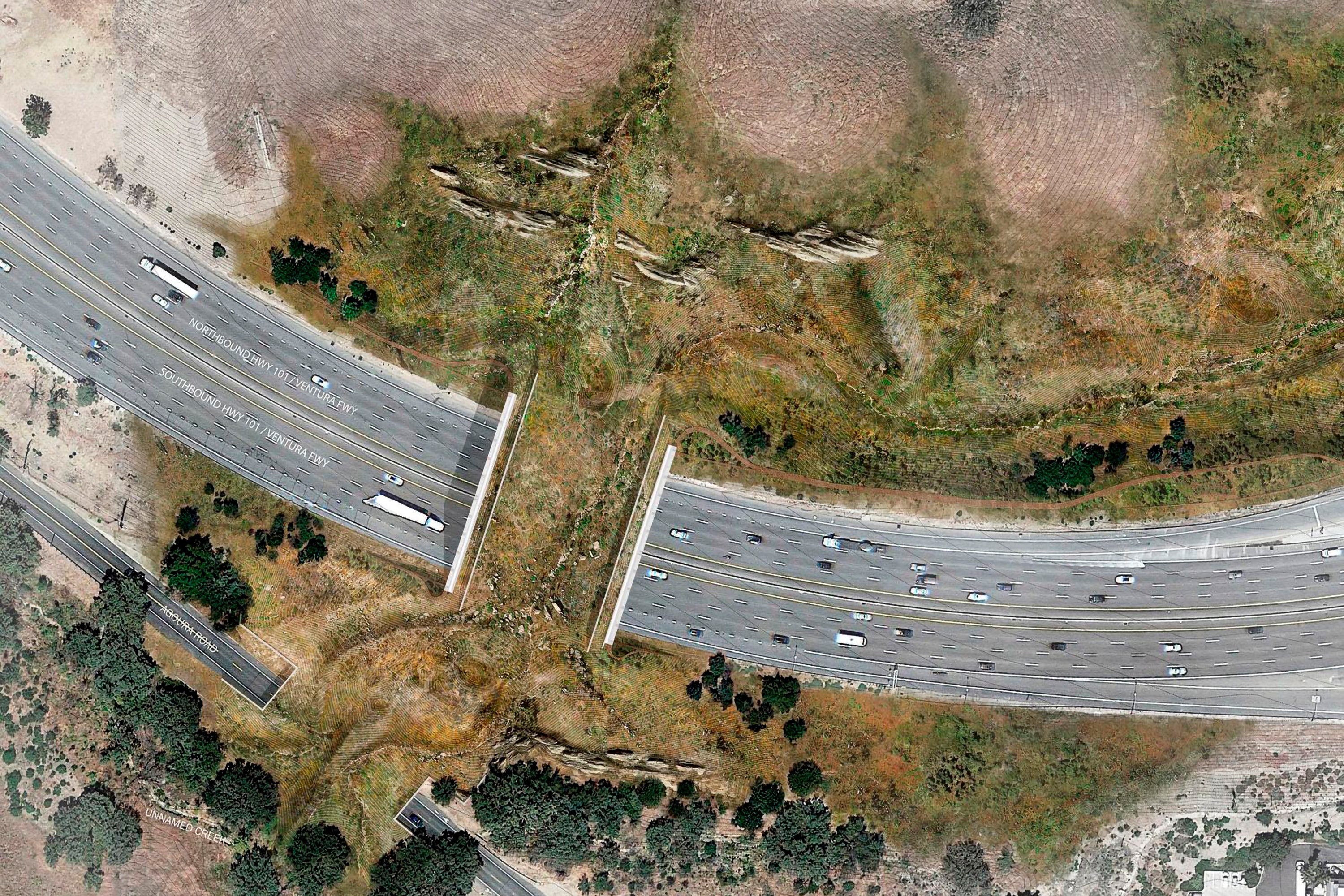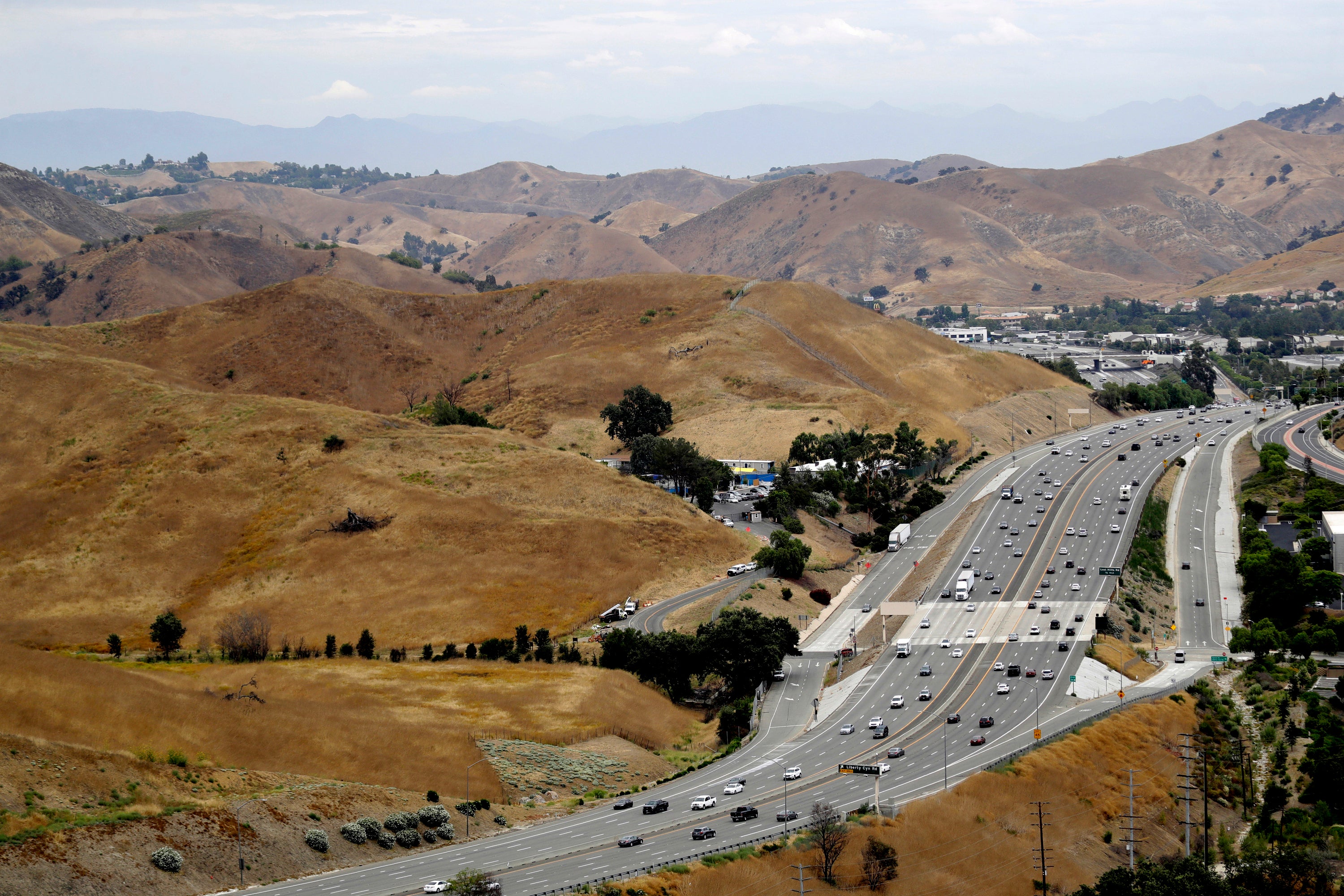World’s largest wildlife crossing to break ground in California
The crossing will span 10 busy lanes of traffic over the US 101 freeway outside of Los Angeles

Your support helps us to tell the story
From reproductive rights to climate change to Big Tech, The Independent is on the ground when the story is developing. Whether it's investigating the financials of Elon Musk's pro-Trump PAC or producing our latest documentary, 'The A Word', which shines a light on the American women fighting for reproductive rights, we know how important it is to parse out the facts from the messaging.
At such a critical moment in US history, we need reporters on the ground. Your donation allows us to keep sending journalists to speak to both sides of the story.
The Independent is trusted by Americans across the entire political spectrum. And unlike many other quality news outlets, we choose not to lock Americans out of our reporting and analysis with paywalls. We believe quality journalism should be available to everyone, paid for by those who can afford it.
Your support makes all the difference.The world’s largest wildlife crossing is set to break ground in southern California next month.
The construction of the Wallis Annenberg Wildlife Crossing will get underway in Agoura Hills, a city in the Santa Monica Mountains region of Los Angeles County.
Work will begin on 22 April in celebration of Earth Day. The crossing will span 10 busy lanes of traffic on the US 101 freeway to become the first bridge of its kind in California and the largest in the world.
The crossing comes after two decades of study by the US National Park Service which has shown that roads and development are deadly for animals trying to cross, and has led to islands of habitat that can genetically isolate wildlife, from bobcats to birds and lizards.
The bridge will allow animals a safe place to cross to avoid vehicle impacts. There are one to two million collisions between vehicles and large animals each year across the US, causing more than 26,00 injuries to people and about 200 deaths.

Urban development has degraded and disrupted the habitats of wild animals, fragmenting migration corridors that are needed for mating and finding food supplies and shelter.
The climate crisis is also serving a new host of threats. As temperatures rise across the states, some species will need to migrate in search of more suitable conditions. In California, increasingly large and unpredictable wildfires also pose a threat from which wildlife populations need routes of escape.
In the past four decades, the number of wildlife crossings have exploded across the US from just a handful in the 1970s and 1980s to more than 1,000 today.
Only a small number of those are the overpass design like the new project in California, while the rest tend to be underpasses or tunnels.
The new crossing will preserve biodiversity across the region by re-connecting an integral wildlife corridor, and most critically, help save a threatened local population of mountain lions from extinction.
The National Wildlife Federation says that the project will provide a lasting benefit to the wildlife and ecology of the area for generations to come, and provide a global model for urban wildlife conservation.
“California’s diverse array of native species and ecosystems have earned the state recognition as a global biodiversity hotspot. In the face of extreme climate impacts, it’s more important than ever that we work together to protect our rich natural heritage,” said California Governor Gavin Newsom.
“This project will restore vital habitat and enable mountain lions and other wildlife to roam safely.”



Join our commenting forum
Join thought-provoking conversations, follow other Independent readers and see their replies
Comments